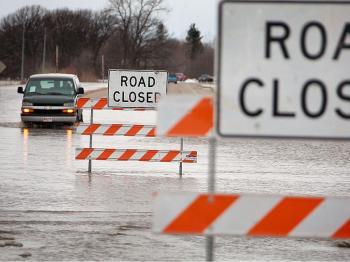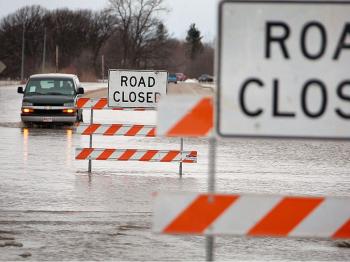Taming the Red River in Fargo
It’s still winter in the Fargo, North Dakota area, but residents are already bracing for spring flooding.

A truck navigates a flooded road near Fargo, North Dakota, in March 2009. Scott Olson/Getty Images

Charlotte Cuthbertson
Senior Reporter
|Updated:





